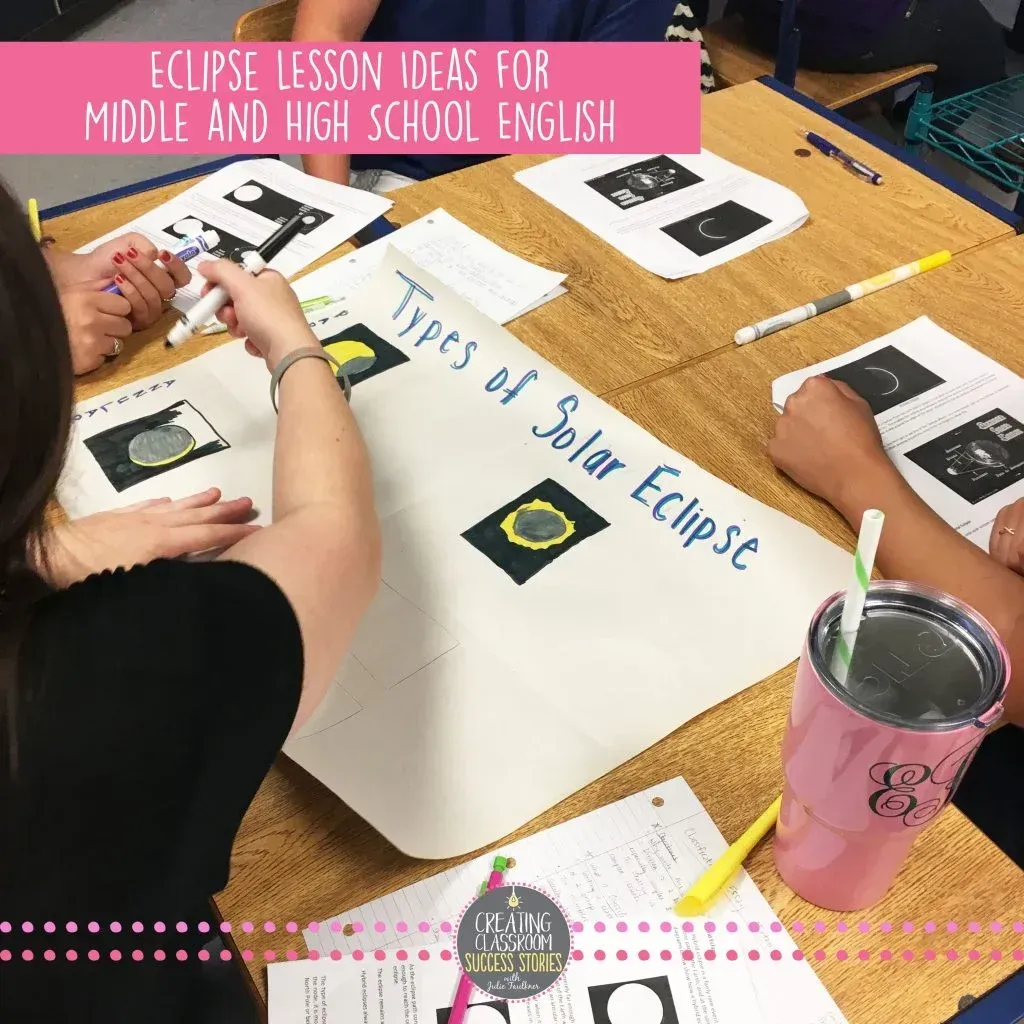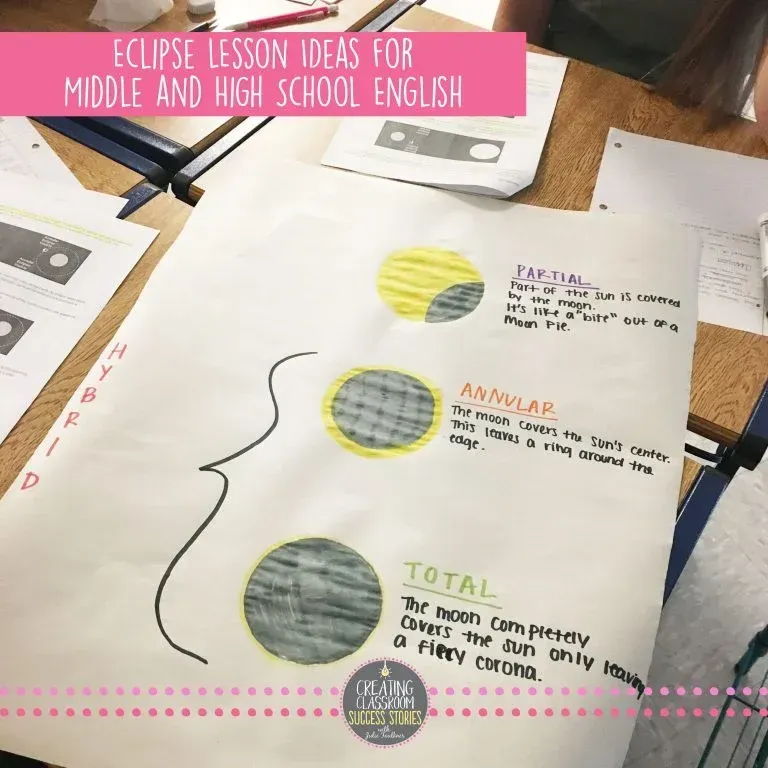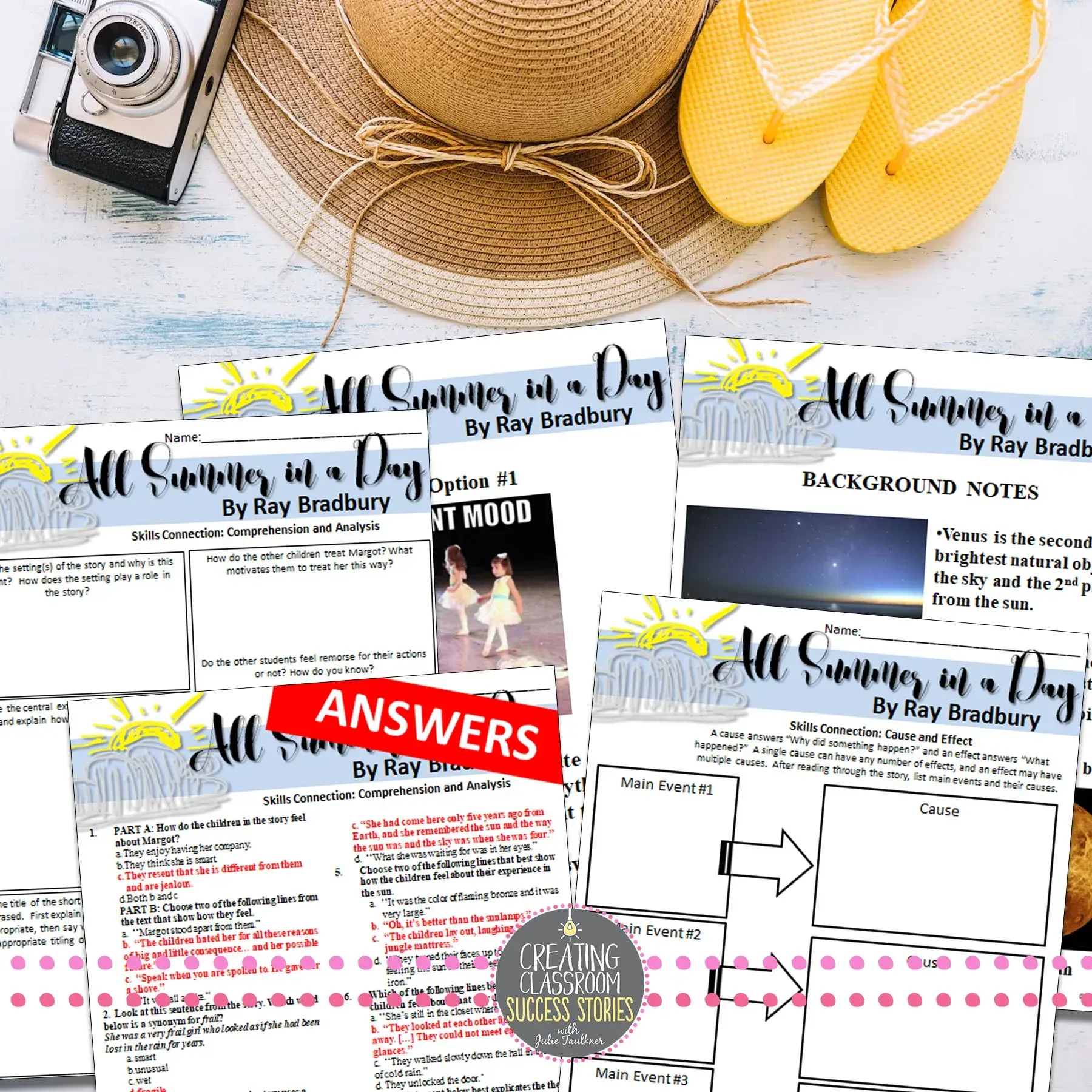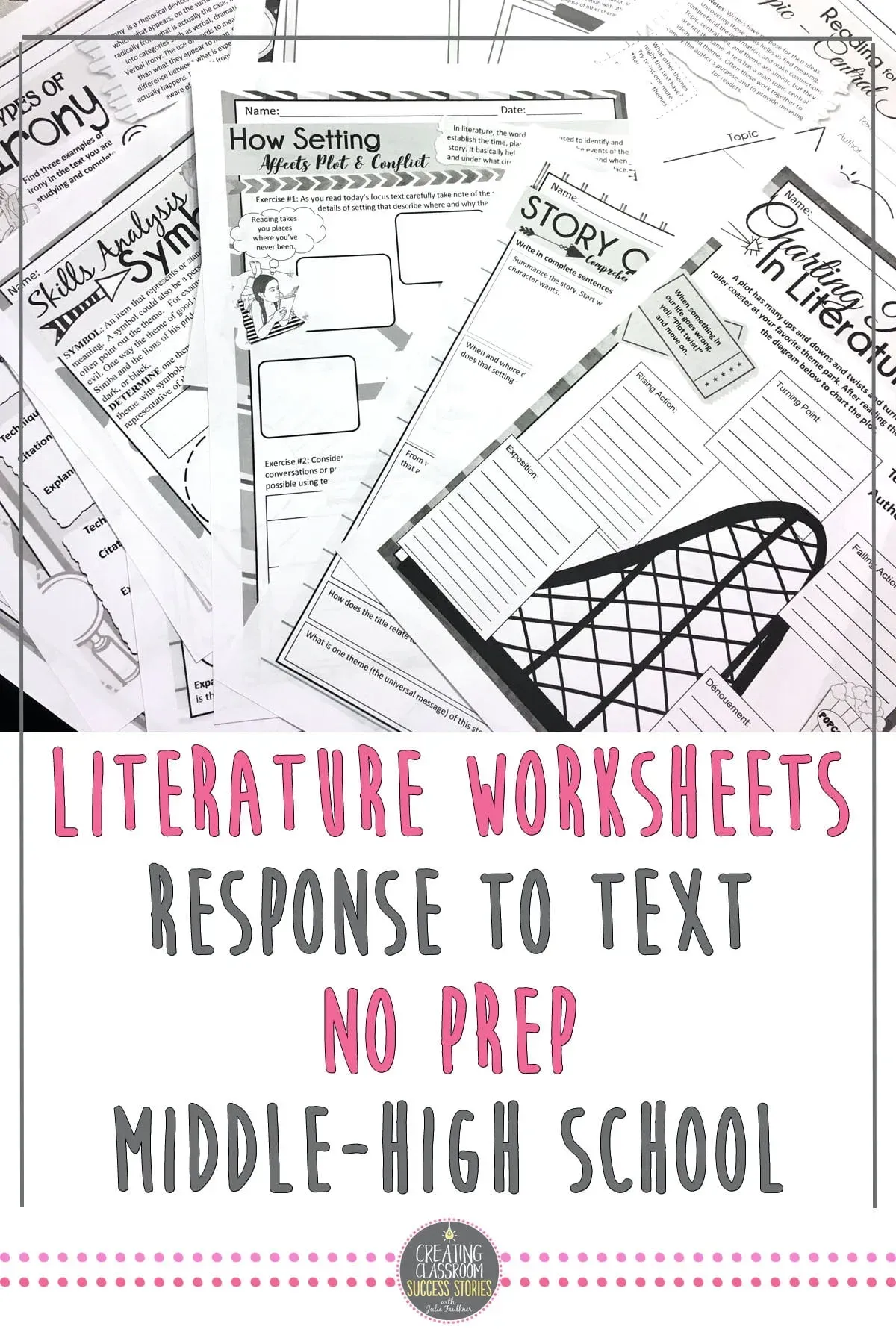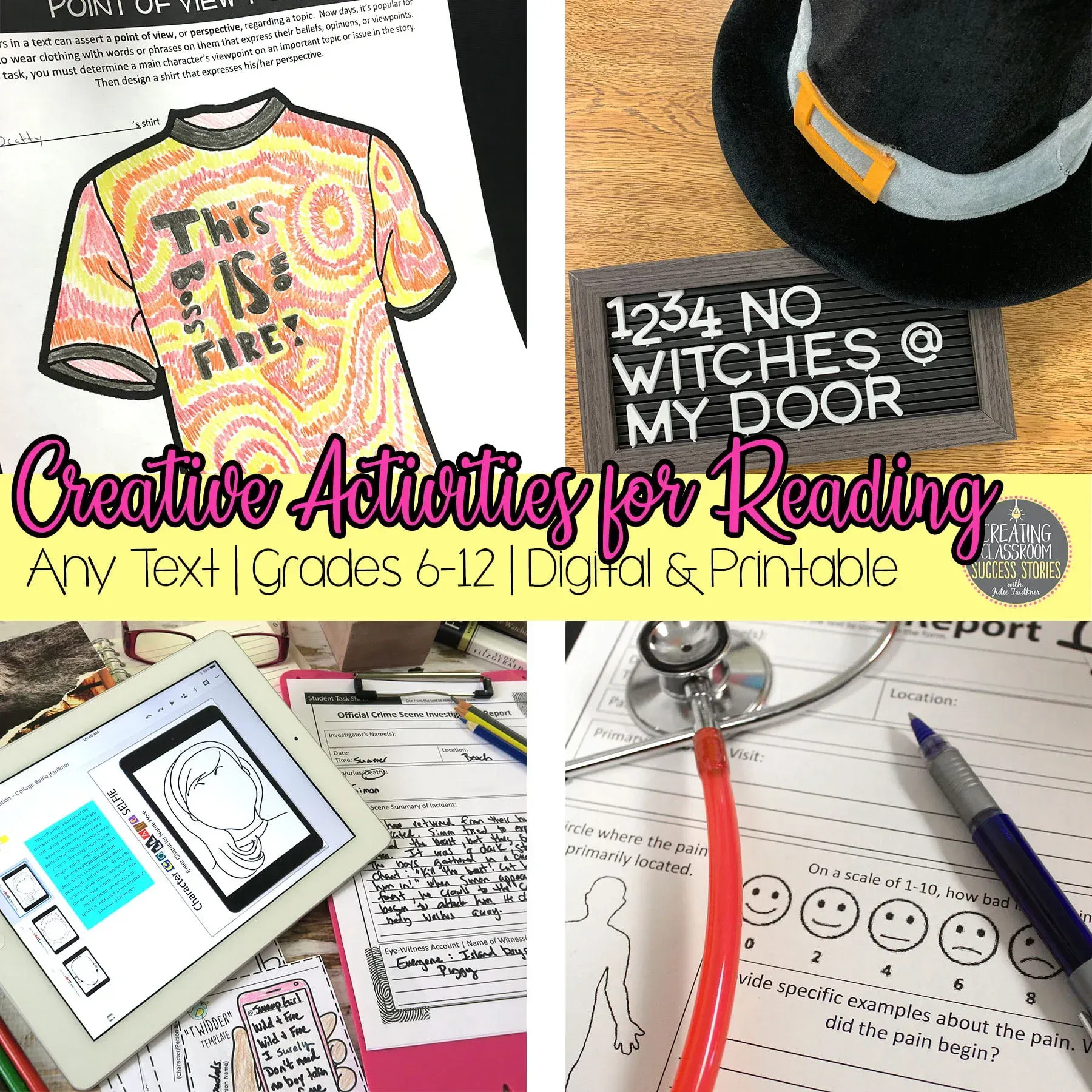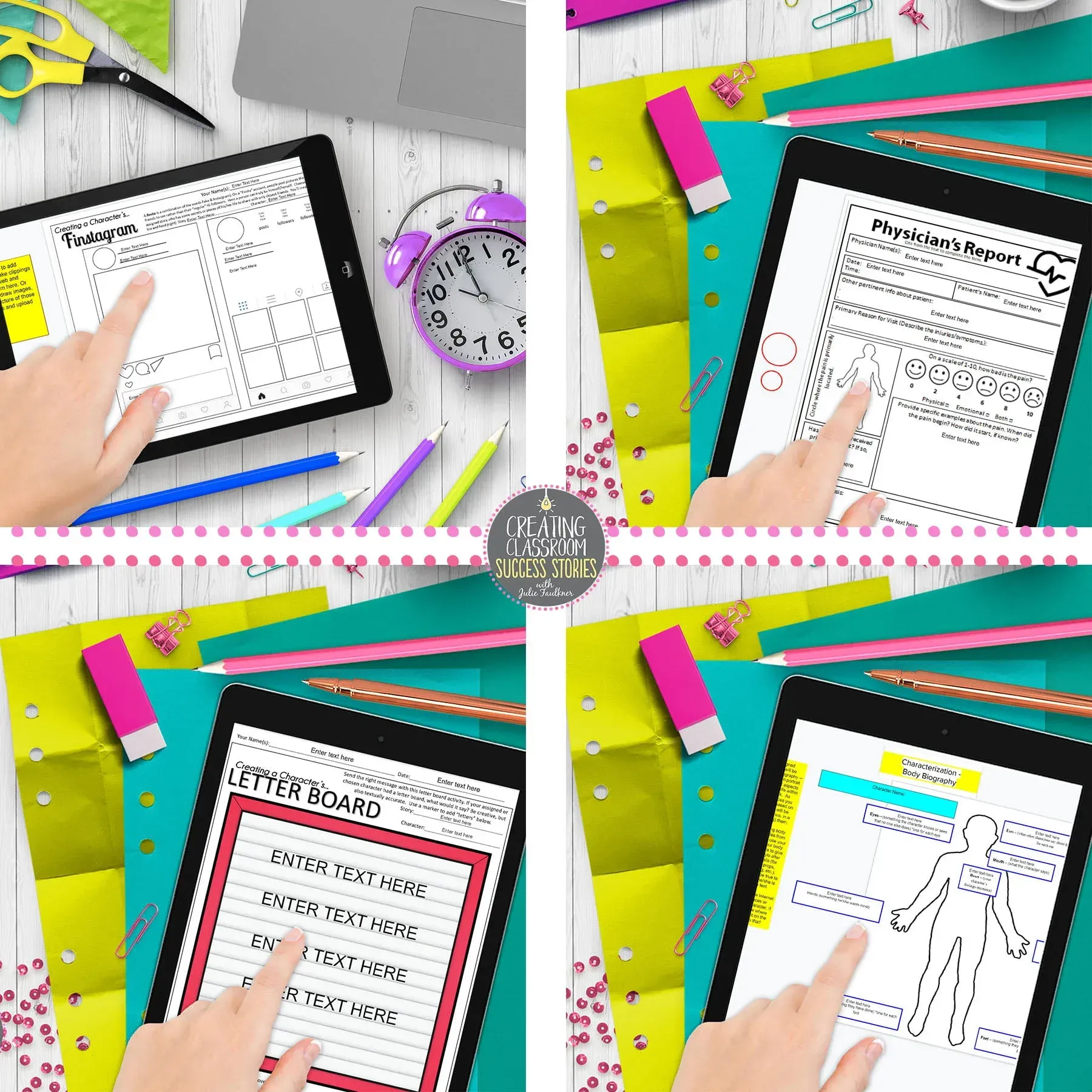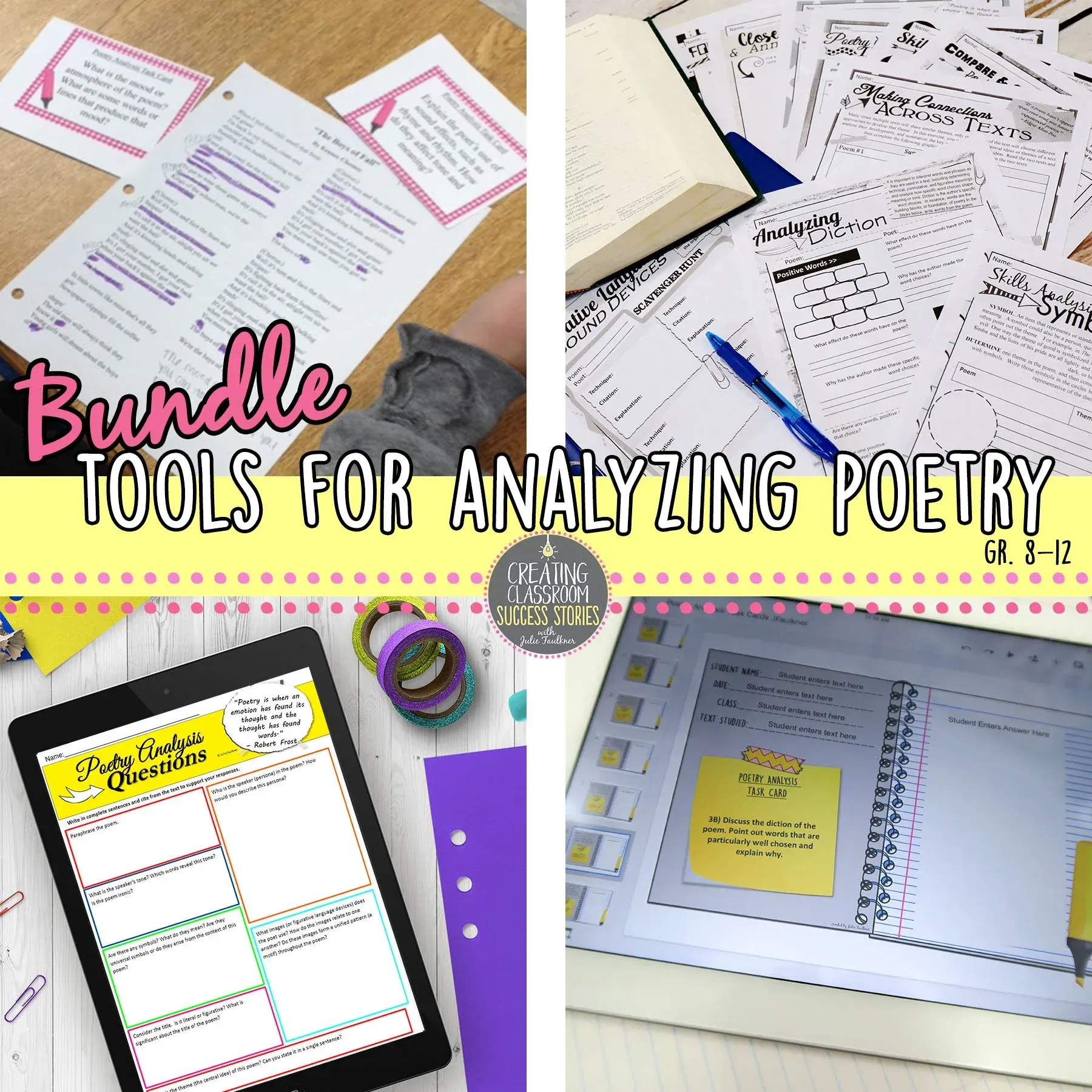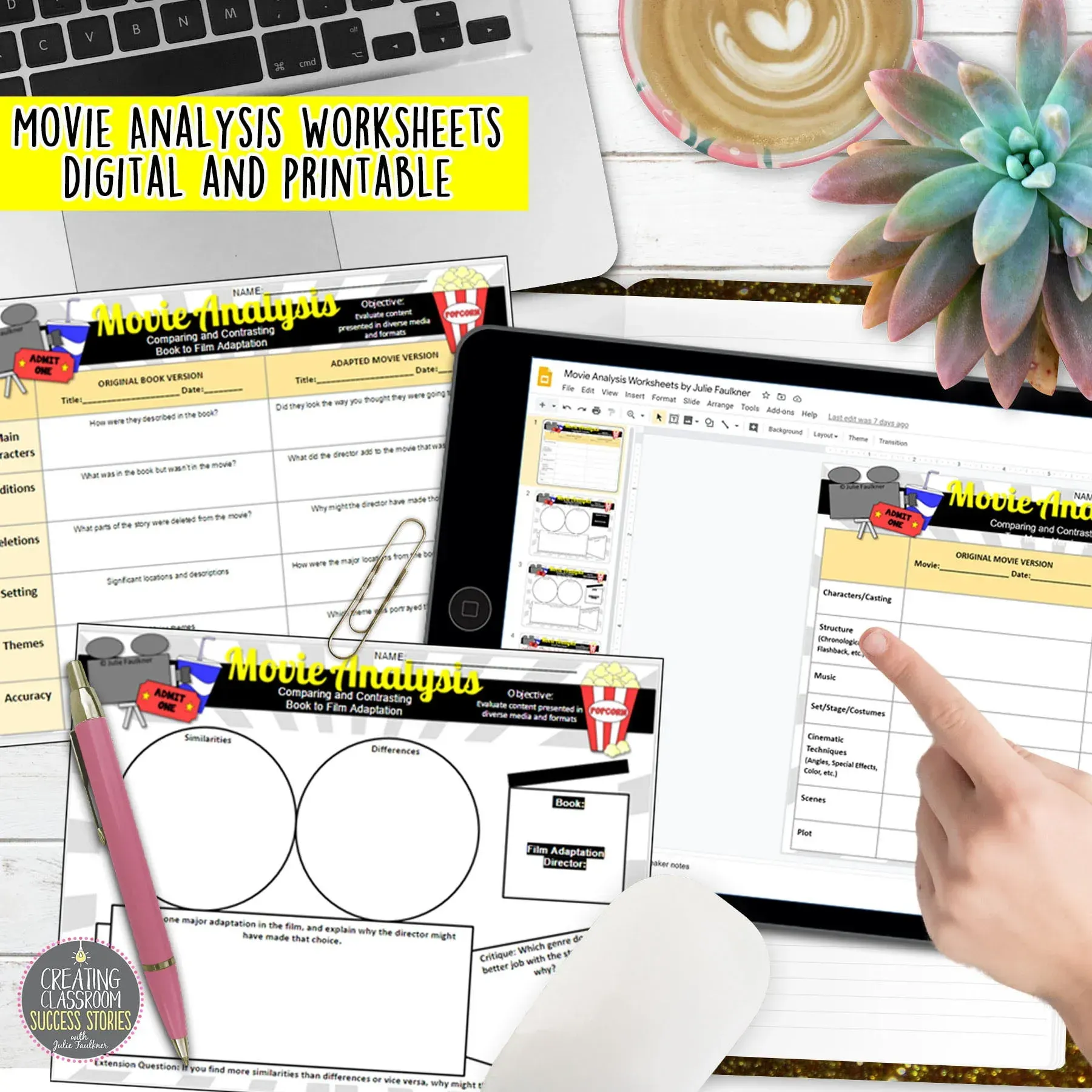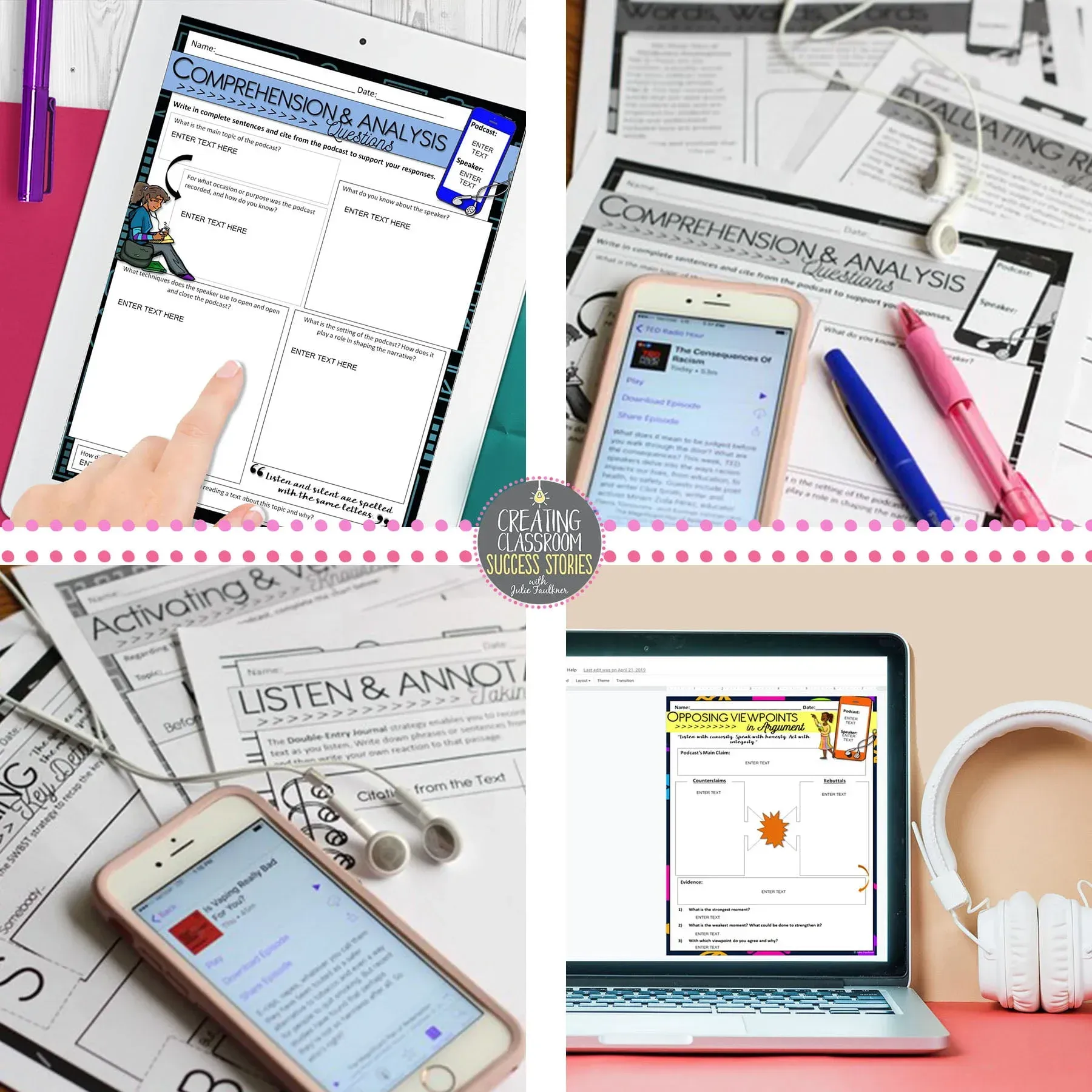Everything You Need to Know
About Celebrating a Solar Eclipse
in Your English Classroom
During my time in the classroom, the world has experienced two solar eclipses – in totality. That’s a pretty big deal — so much so that most schools in the area and beyond even adjust their schedules. Of course, I wanted to use it as a teachable moment in my classroom, and “totally” join in on the fun! Therefore, I’m sharing everything you need to know about celebrating the solar eclipse in your English classroom.
READING TEXTS FOR THE SOLAR ECLIPSE
>Informational Texts About Solar Eclipses
Find some articles that explain what happens during an eclipse. Any of the following would work:
- From Space.com
- From NASA
- From Vanderbilt
For the solar eclipse lesson I did with my dual enrollment seniors, they read the article and annotated it. Then, in groups, they had to make a poster displaying that information. There were many skills that I was able to cover in this lesson including reading complex informational (scientific texts which score points for ACT science); summarizing; classifying information; speaking & listening; art. Depending on what type of information the article conveys and what skill you’d like to teach or review, you can adjust the response your students produce. Before conducting the lesson, review close reading strategies with my Close Reading and Annotating Teaching Pack.
>Nonfiction/Memoirs That Relate Thematically
One memoir that comes to mind is Elie Wiesel’s Night. In this nonfiction text, the theme of darkness symbolizes Wiesel’s experience during the Holocaust. In my complete unit for Night, I have students explore this very concept with an interactive plot chart symbolized by moon phases. Students review the phases and then relate each phase of the moon cycle to a point along the plot in the memoir.
>Science Fiction
Ray Bradbury is the first author who comes to mind when science fiction is mentioned. He expertly explored and explicated his imagination of the future and even life outside of Earth in relation to and as a reflection of our own humanity. I’ll be reading his “All Summer in a Day” with my juniors for our eclipse lesson. While the characters in the story actually are waiting to see the sun, and we will be waiting to do the opposite on solar eclipse day, Margot, the main character, is literally in the dark and misses the experience entirely because of her antagonistic classmates. See my easy prep, ready-to-go lesson with other paired texts and a complete sun-themed unit. I think this lesson would also work well with younger students, too. If you are looking for a science fiction text for more advanced students, check out Isaac Asimov’s Nightfall. Pair it with my literary analysis task cards for any text, and your students won’t be in the dark for long.
>Drama (aka Shakespeare)
We can’t overlook Shakespeare’s Twelfth Night and A Midnight Summer’s Dream in our list of “solar-themed” texts to read as we celebrate the solar eclipse in our middle or high school English classrooms! Check out my post Everything You Need to Know About Teaching Shakespeare with a Translation for more information on teaching Shakespeare. Use my literary analysis worksheets for any text to make teaching Shakespeare that much easier!
>Novels
If you have time to launch a full novel study during the time of year when a solar eclipse rolls around, here are several texts that might enlighten your students!
- Walk Two Moons by Sharon Creech
- The Sun is Also a Star by Nicola Yun
- The Giver of Stars by Jojo Moyes
- The Killers of the Flower Moon by David Grann
- The Sun Also Rises by Ernest Hemingway
>Songs & Poetry
Students love the opportunity to listen to songs in class, and I don’t mind when we study them as poetry. Take a look at Pink Floyd’s “Eclipse” or Bonnie Tyler’s “Total Eclipse of My Heart.” These two songs in particular are rich with figurative language and a particularly appropriate dark tone. A classic poem that my students always connect with is Dylan Thomas’s “Do Not Go Gentle Into That Good Night.” It really makes them think! You can take a look at my poetry single activity for a no-prep lesson with this poem. Also, grab my poetry analysis bundle with a variety of tools including poetry worksheets, poetry analysis task cards that are perfect for stations, and vocabulary review games. You’ll be all set to guide your students through a celestial poetry analysis.
WRITING ABOUT A SOLAR ECLIPSE
Students don’t usually get “starry-eyed” about writing, but when the topics are as cool as a once-in-a-lifetime solar eclipse event, even the most reluctant writers will “shine.”
- Narrative Prompt – Tell a story of what happens if the moon doesn’t move out from in front of the sun, and it stays dark forever. Teach younger students to use descriptive language when writing narratives using my interactive “Show. Don’t Tell.” sorting game.
- Explanatory Prompt – Compare and contrast the different types of solar eclipses. (This would be a perfect follow-up to the informational text reading activity above.)
- Explanatory Prompt – Write to explain what causes a total solar eclipse to occur.
- Argumentative Prompt – Your school is considering closing for Solar Eclipse Day, but some of the school board members disagree. Write to convince them to let you have the day off. If your students need extra practice or an introduction to counterclaims, my Claims and Counterclaims Teaching Pack is sure to brighten their arguments.
- Persuasive Prompt: Many cities across the country are planning events and celebrations to host viewing parties for the Great American Solar Eclipse. Have your students use propaganda techniques and figurative language to create posters advertising a real – or imagined – viewing party in your neck of the woods. Sneak in a little review of the types of propaganda with my complete teaching pack.
- Research Prompt: Research the history of solar eclipses and make a presentation with your findings. If your students need to brush up on MLA formatting, use my complete MLA 9th Teaching Pack with an easy cheat sheet you can print and give them.
CELEBRATE THE SOLAR ECLIPSE WITH A MOVIE IN YOUR ENGLISH CLASSROOM
You won’t need special solar eclipse glasses — or 3D glasses either — for this list but your students will enjoy a little movie break and you will appreciate that you can still cover a few standards! Learn more about Teaching with Movies at this post of mine.
- A Raisin in the Sun (Grab my no-prep movie guide here.)
- Race the Sun (Grab my no-prep movie guide here.)
- The Twilight Saga (Connect it to R&J.)
If you have your own themed solar eclipse movies, let me know in the comments section! Also, take a look at my no-prep movies guides in print and digital that make showing movies meaningful and easy.
THROW A PARTY WITH THEMED-FOOD
While food may not seem like it matches a standard, if you make it themed or punny, it does! Read more about Everything You Need to Know About Bringing Food into Class at this post. Stock up on these solar eclipse-themed food items for your classroom party:
- Sunny D
- Sun Chips
- Moon Pies
- Star Crunch Little Debbies
- Cosmic Brownies Little Debbies
- Sunkist Soda
- Milky Way Candy Bars
- Starburst Candies
- Eclipse Gum
- Sun Drop Soda
- Starbucks Cold Brew
- Pop Rocks
- Orbit Gum
LISTEN TO A PODCAST ABOUT THE SOLAR ECLIPSE
Grab those earbuds or headphones and get students plugged into a podcast about the solar eclipse. This list is school-appropriate and great for various ages. Find out more info about each podcast on my FREE list of podcasts (on any topic) with suggestions here. Just search “solar eclipse” on the document and plug and play! Plus – print my podcast listening guides (grab them here), and you’ll have the perfect no-prep lesson for celebrating the solar eclipse in your English classroom.
- The Solar Eclipse & Wildlife Subject of New DEC Podcast
- Inquisikids Daily
- Brains On! Science podcast for kids
- Found in Space: A Science Podcast for Kids and Teens
- Lore (“All Fall Down” Ep 74)
I’m not forcing students to read Shakespeare, as I’ve seen people say. I’m offering them new opportunities. Many of my rural students may never pick up a copy of Shakespeare again, but that wasn’t my goal anyway. Call me a sucker for tradition, but I can’t pass up the opportunity to see my students succeed with something as challenging as Shakespeare when given the right tools. If you visit my classroom, rest assured that you’ll find a stack of Shakespeare Made Easy books ready to go.
Love this content?
Sign up for my email newsletter with more tips, ideas, success stories, and freebies!









